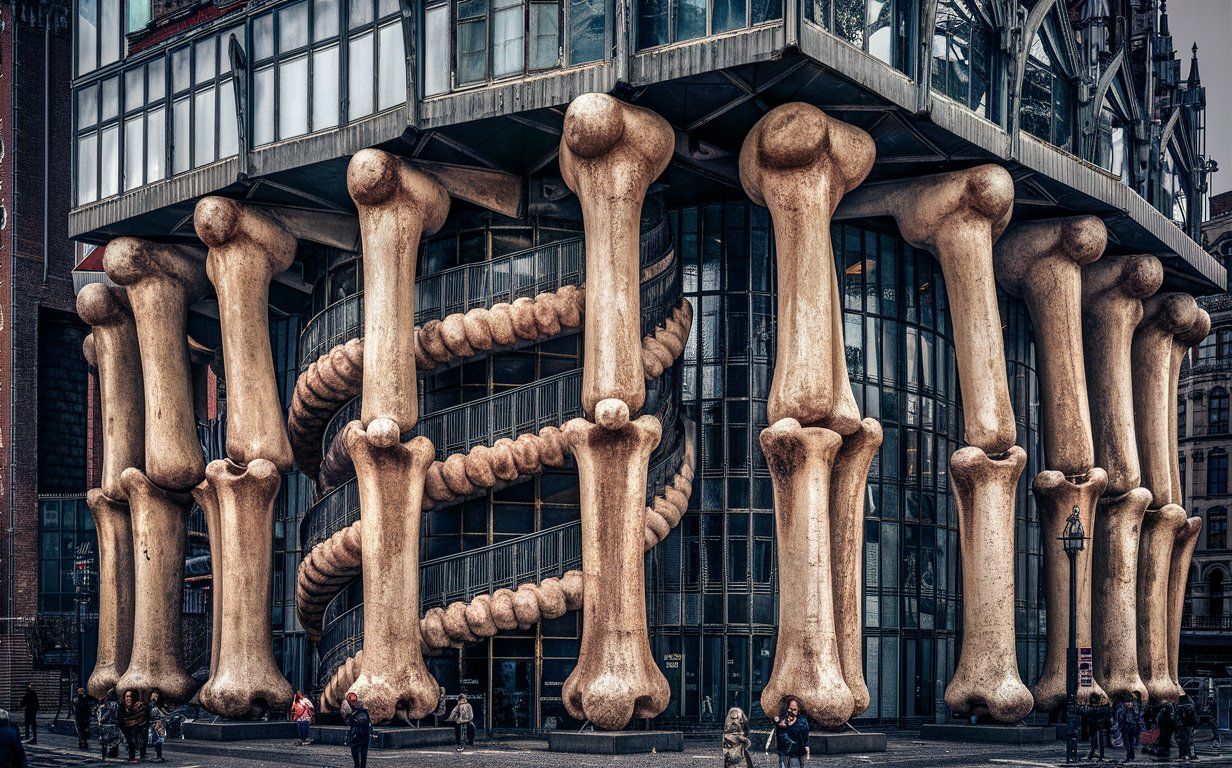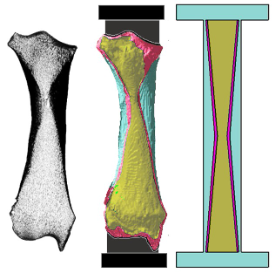Follow us on Google News (click on ☆)
A study, published in Bioinspiration & Biomimetics, suggests that the structure of bones from current giant mammals offers new pathways for imaging more resilient columns with less material.

Bioinspiration is a design approach based on the observation of nature as a model. Where artificial intelligence programs sometimes achieve suboptimal results, millions of years of evolution have in some cases forged structures with greater potential.
Among these, the skeleton of vertebrates adapts to mechanical constraints (weight, muscle action). It must be resilient enough to survive without being too heavy, which would make locomotion energetically expensive. The shape of bones, as well as their internal structure, are thus adapted to maximize resistance to imposed constraints with a minimal amount of material. Drawing inspiration from bones should thus allow for a reduction in manufacturing costs (both financial and ecological) and an increase in the resistance (and lifespan) of bio-inspired structures.
This study proposes to examine which adaptive characteristics of the external shape and internal structure of bones are linked to compression resistance, and to test what the resistance of bio-inspired columns would be. To do this, the researchers first had to select the bones to analyze.

From the structure of bones to bio-inspired columns. Cross section of a white rhinoceros radius (left), column directly inspired by the bone (middle), bio-inspired cylindrical column (right).
© Chaves-Jacob, Etienne & Houssaye
Their results revealed that bone shapes are less effective than a cylinder in resisting compression. However, the bio-inspired cylindrical column showed better resistance than the solid column. This outcome, thus, highlights the potential of designing bio-inspired cylindrical columns based on the bones of large terrestrial vertebrates. The study also raised the prospect of drawing inspiration from certain extinct forms, here from the giant rhinoceroid Paraceratherium.
These results allowed the researchers to validate their approach and understand in which directions to continue their research to obtain even more resistant columns.
Reference:
Houssaye, A., Etienne, C., Gallic, Y. L., Rocchia, F., and Chaves‐Jacob, J. How can research on modern and fossil bones help us build more resistant columns ? Bioinspiration & Biomimetics, published on March 19, 2024. https://doi.org/10.1088/1748-3190/ad311f